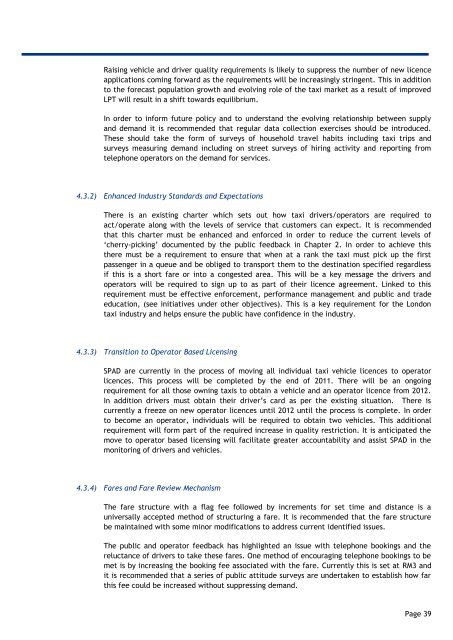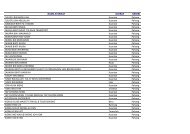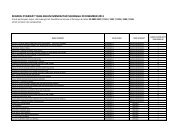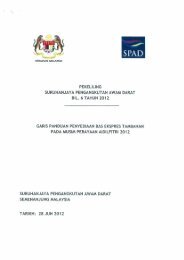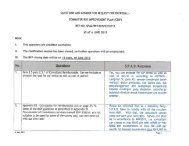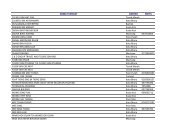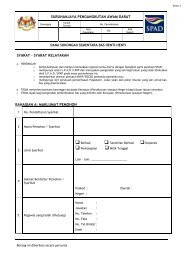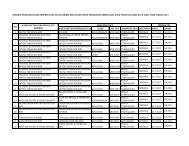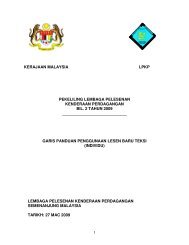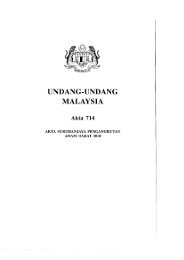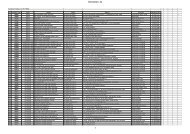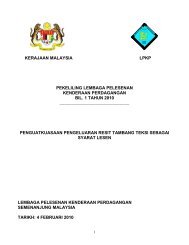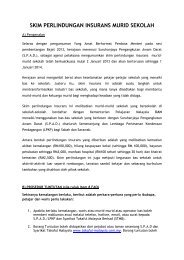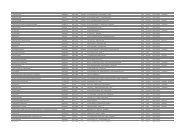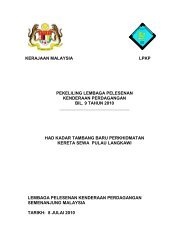4. Developing the Taxi Transformation Plan - SPAD
4. Developing the Taxi Transformation Plan - SPAD
4. Developing the Taxi Transformation Plan - SPAD
Create successful ePaper yourself
Turn your PDF publications into a flip-book with our unique Google optimized e-Paper software.
Raising vehicle and driver quality requirements is likely to suppress <strong>the</strong> number of new licence<br />
applications coming forward as <strong>the</strong> requirements will be increasingly stringent. This in addition<br />
to <strong>the</strong> forecast population growth and evolving role of <strong>the</strong> taxi market as a result of improved<br />
LPT will result in a shift towards equilibrium.<br />
In order to inform future policy and to understand <strong>the</strong> evolving relationship between supply<br />
and demand it is recommended that regular data collection exercises should be introduced.<br />
These should take <strong>the</strong> form of surveys of household travel habits including taxi trips and<br />
surveys measuring demand including on street surveys of hiring activity and reporting from<br />
telephone operators on <strong>the</strong> demand for services.<br />
<strong>4.</strong>3.2) Enhanced Industry Standards and Expectations<br />
There is an existing charter which sets out how taxi drivers/operators are required to<br />
act/operate along with <strong>the</strong> levels of service that customers can expect. It is recommended<br />
that this charter must be enhanced and enforced in order to reduce <strong>the</strong> current levels of<br />
„cherry-picking‟ documented by <strong>the</strong> public feedback in Chapter 2. In order to achieve this<br />
<strong>the</strong>re must be a requirement to ensure that when at a rank <strong>the</strong> taxi must pick up <strong>the</strong> first<br />
passenger in a queue and be obliged to transport <strong>the</strong>m to <strong>the</strong> destination specified regardless<br />
if this is a short fare or into a congested area. This will be a key message <strong>the</strong> drivers and<br />
operators will be required to sign up to as part of <strong>the</strong>ir licence agreement. Linked to this<br />
requirement must be effective enforcement, performance management and public and trade<br />
education, (see initiatives under o<strong>the</strong>r objectives). This is a key requirement for <strong>the</strong> London<br />
taxi industry and helps ensure <strong>the</strong> public have confidence in <strong>the</strong> industry.<br />
<strong>4.</strong>3.3) Transition to Operator Based Licensing<br />
<strong>SPAD</strong> are currently in <strong>the</strong> process of moving all individual taxi vehicle licences to operator<br />
licences. This process will be completed by <strong>the</strong> end of 2011. There will be an ongoing<br />
requirement for all those owning taxis to obtain a vehicle and an operator licence from 2012.<br />
In addition drivers must obtain <strong>the</strong>ir driver‟s card as per <strong>the</strong> existing situation. There is<br />
currently a freeze on new operator licences until 2012 until <strong>the</strong> process is complete. In order<br />
to become an operator, individuals will be required to obtain two vehicles. This additional<br />
requirement will form part of <strong>the</strong> required increase in quality restriction. It is anticipated <strong>the</strong><br />
move to operator based licensing will facilitate greater accountability and assist <strong>SPAD</strong> in <strong>the</strong><br />
monitoring of drivers and vehicles.<br />
<strong>4.</strong>3.4) Fares and Fare Review Mechanism<br />
The fare structure with a flag fee followed by increments for set time and distance is a<br />
universally accepted method of structuring a fare. It is recommended that <strong>the</strong> fare structure<br />
be maintained with some minor modifications to address current identified issues.<br />
The public and operator feedback has highlighted an issue with telephone bookings and <strong>the</strong><br />
reluctance of drivers to take <strong>the</strong>se fares. One method of encouraging telephone bookings to be<br />
met is by increasing <strong>the</strong> booking fee associated with <strong>the</strong> fare. Currently this is set at RM3 and<br />
it is recommended that a series of public attitude surveys are undertaken to establish how far<br />
this fee could be increased without suppressing demand.<br />
Page 39


